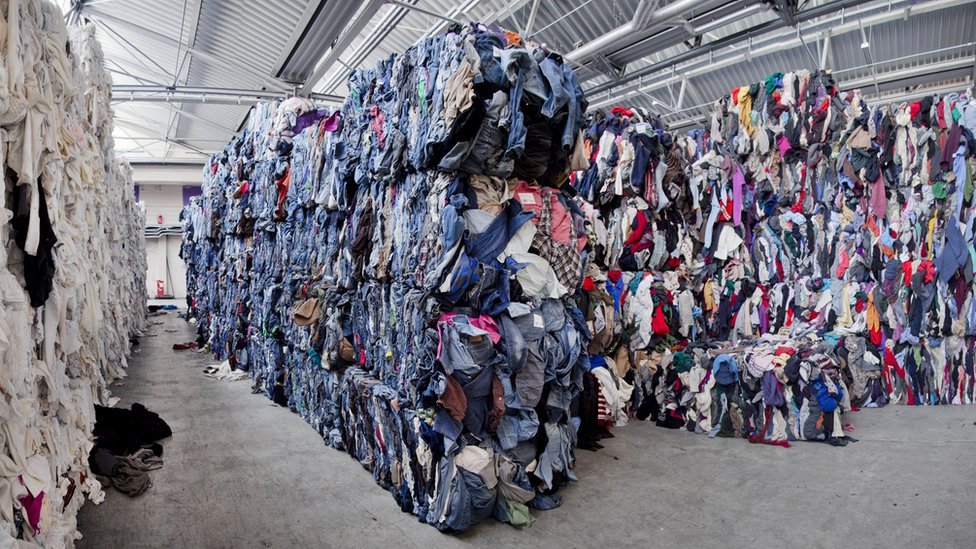
Welcome back, today will be the last day to answer the questions from the 30 lists I have posted previously. If you have not checked out my posts, please do so before reading this entry.
- Are there any NGO or NPO organizations who is fighting against fast-fashion?
- How are NGOs and NPOs dealing with the problem fast-fashion has?
- What issues do I need to include to create a new NGO?
These are the last 3 questions to answer in this blog! (I have answered 20 questions!!)
First, to answer the 2 questions,
- Are there any NGO or NPO organizations who are fighting against fast-fashion?
- How are NGOs and NPOs dealing with the problem fast-fashion has?
According to the BORGEN Magazine and to summarize
"5 Organizations who are in the Fight Against Fast Fashion",
There are 5 famous organizations which are fighting against fast-fashion.
- Centre for Sustainable Fashion: It is a research center at London College of Fashion. Here, it is working to find new ways to create garments in a lower environmental and labor costs. It continues to research and educate sustainable fashion. Ever since its beginning in 2008, it has partnered with Nike, H&M, Kering and other companies to teach the businesses how to reduce carbon emissions and less waste. A project by the name of Clothes Well Lived is launched to think back our buying habits and the throw-away culture.
- Greenpeace: This is a NPO to attack and find solutions to environmental issues broadly. It mainly does the "peaceful protest" to achieve its goals. One of its campaigns is "Living Toxic-Free". This aims to reduce chemical disasters and reduce industrial pollution. More specifically, the problem with the petrochemical textiles and its micro-plastics in water to our body. This organization tries to pressure clothing brands to use safer materials. Nike, Adidas and H&M have pledged to rethink its process of item production through constant pressure from Greenpeace.
- Solidaridad- This organization woks to make the cotton supply chain to be more sustainable. It began by teaching farmers, to make use of more sustainable ways for watering, harvesting and planting. Right now, farmers are facing very dangerous chemicals which they are not sure of to grow cotton. Solidaridad gives cotton farmers physical protection. They work with governments, NGOs and local communities to find solutions to problems.
- TRAID- It has 3 goals. Increase clothes reuse, fund development projects to improve the textile industry and educate people working in that industry. It owns 1,500 pieces of land for people to donate clothes and 191 districts in the U.K. The organization resells and remakes the donated clothes. This organization also donates money to other organizations helping to improve working conditions in the textile industry. It also offers free workshops to educate to how to live a sustainable life.
- Waste & Resource Action Programme- It offers solutions to extend clothing life and to reduce clothing waste around the world. Its goals is to "re-define" the possibilities of recycling. With the work of WRAP, carbon emissions decreased by 13.4% and landfill waste reduced by 4%. It encourages various companies to follow the example of Patagonia and Lululemon which offers repairs for their merchandise.
Seeing ideas which NGOs have made successful, I would like to answer the last question,
- What issues should I include to create a new NGO?
The ideas to include to create a NGO to fight against fast-fashion are...
・Better working conditions in factories
・Rethinking the use of petrochemical textiles
・Educate buying habits to reduce throw-aways.
・Encourage companies to be open about its productions
Thank you fo reading till the end!
Caso, A. (2020). 5 Organizations who are in the Fight Against Fast Fashion - BORGEN. BORGEN Magazine. Retrieved 19 July 2021, from https://www.borgenmagazine.com/5-organizations-who-are-in-the-fight-against-fast-fashion/.
Maureau, V. (2018). Why do NGOs matter in Fashion: Vol 1 - Slow Fashion World | Where conscious changemakers connect & grow. Slow Fashion World | Where conscious changemakers connect & grow. Retrieved 19 July 2021, from https://slowfashionworld.com/why-do-ngos-matter/.
That's very informative. I didn't realize that Patagonia and Lululemon will repair merchandise you buy through them. I have some Patagonia products (which are well made and last a long time) but even my Patagonia backpack eventually had issues with its zippers and severe wear and tear. Perhaps it was beyond repair. i like the fact that Patagonia donates 1% of its profits to environmental causes.
ReplyDeleteThat we have to worry about both natural fibers (like cotton that isn't necessarily grown in a sustainable way) and synthetic fibers, that produce micro-plastics, is worrying. "Natural" may not be better in all cases.